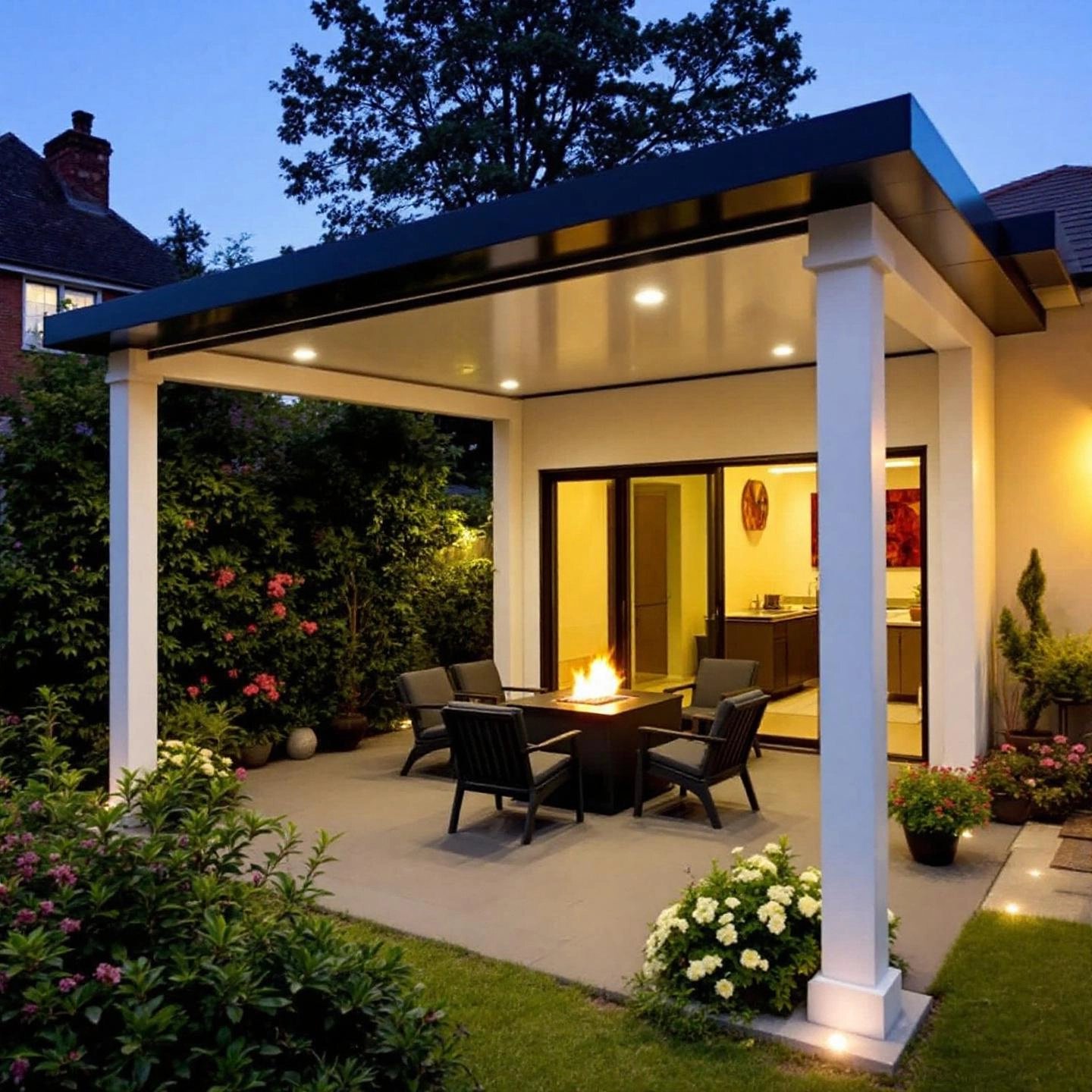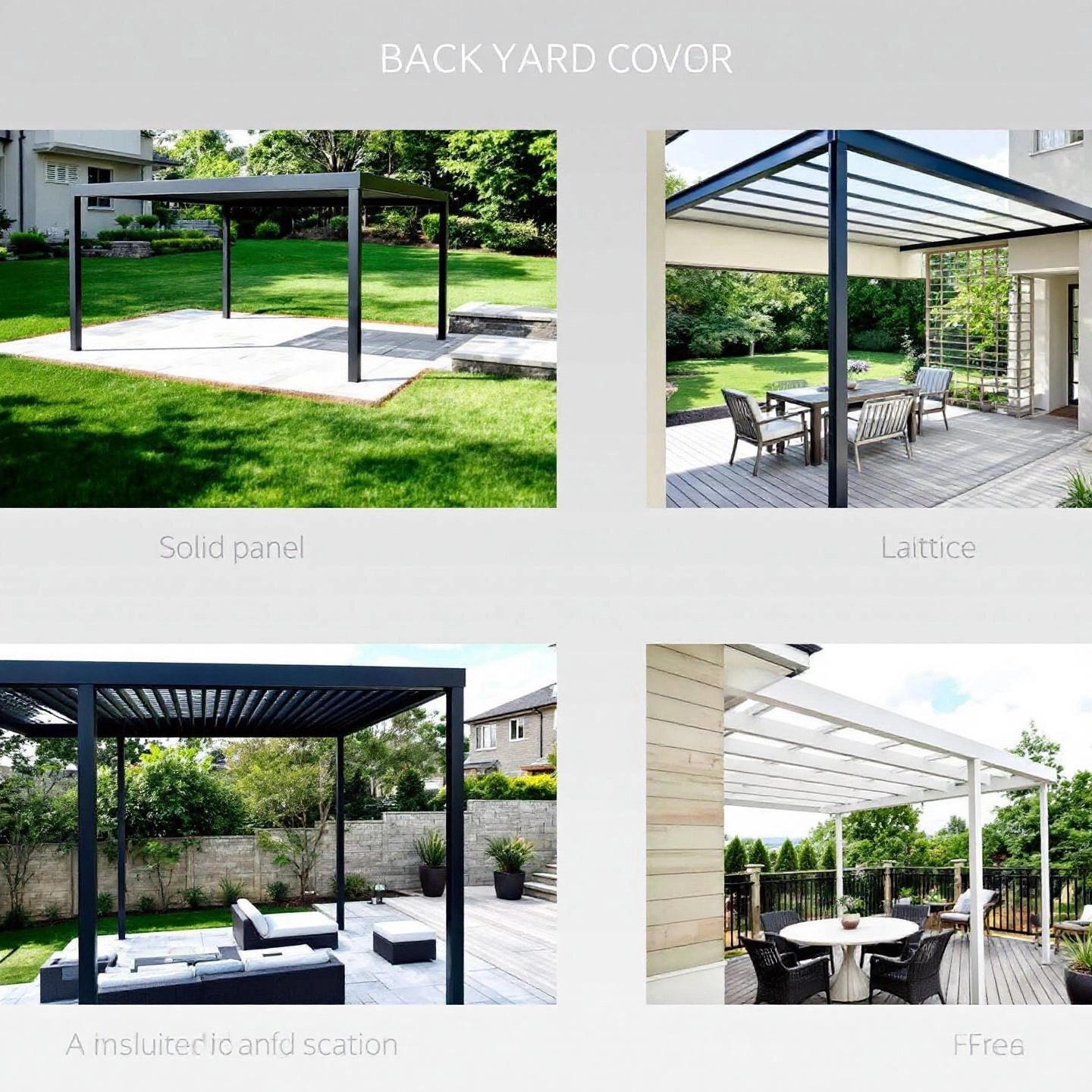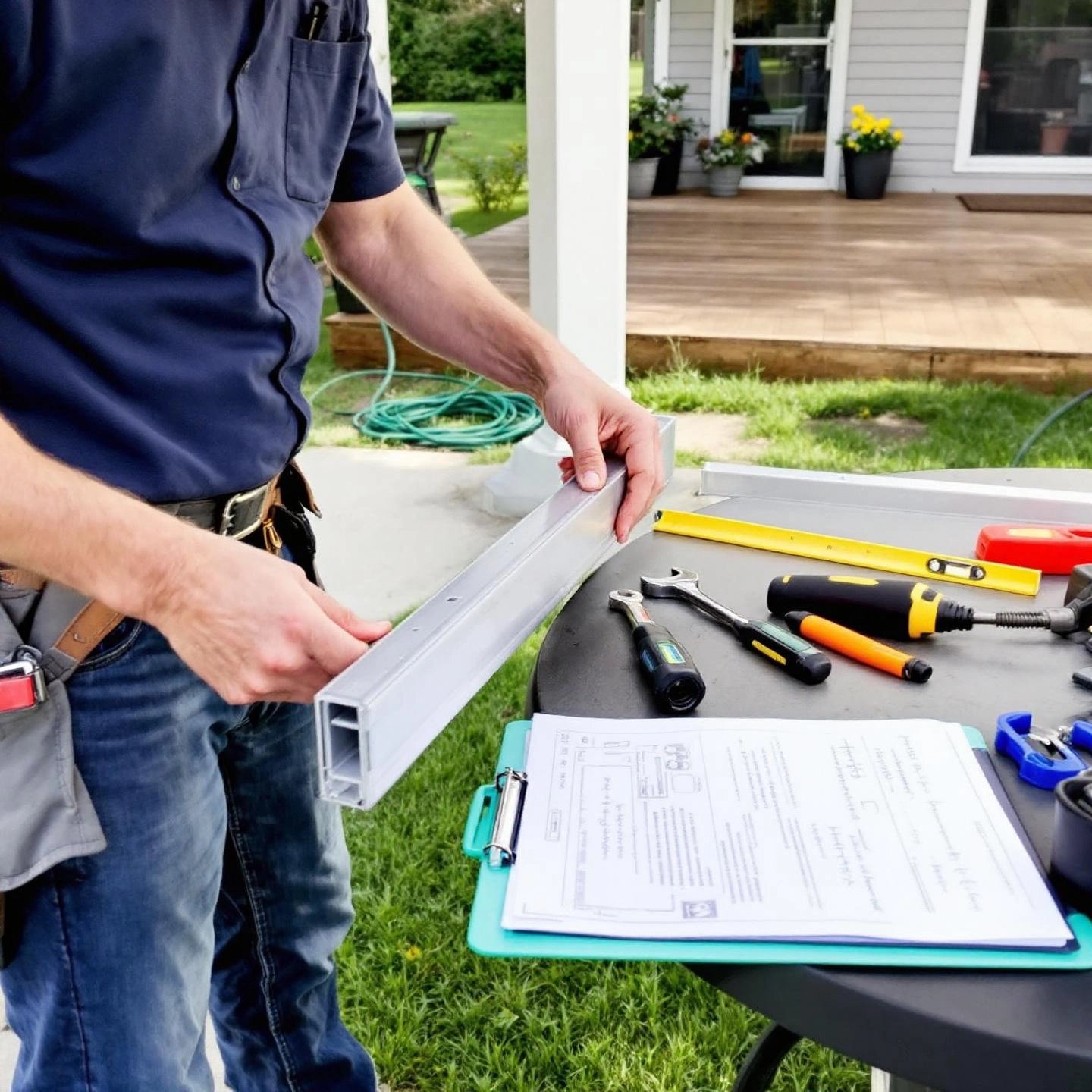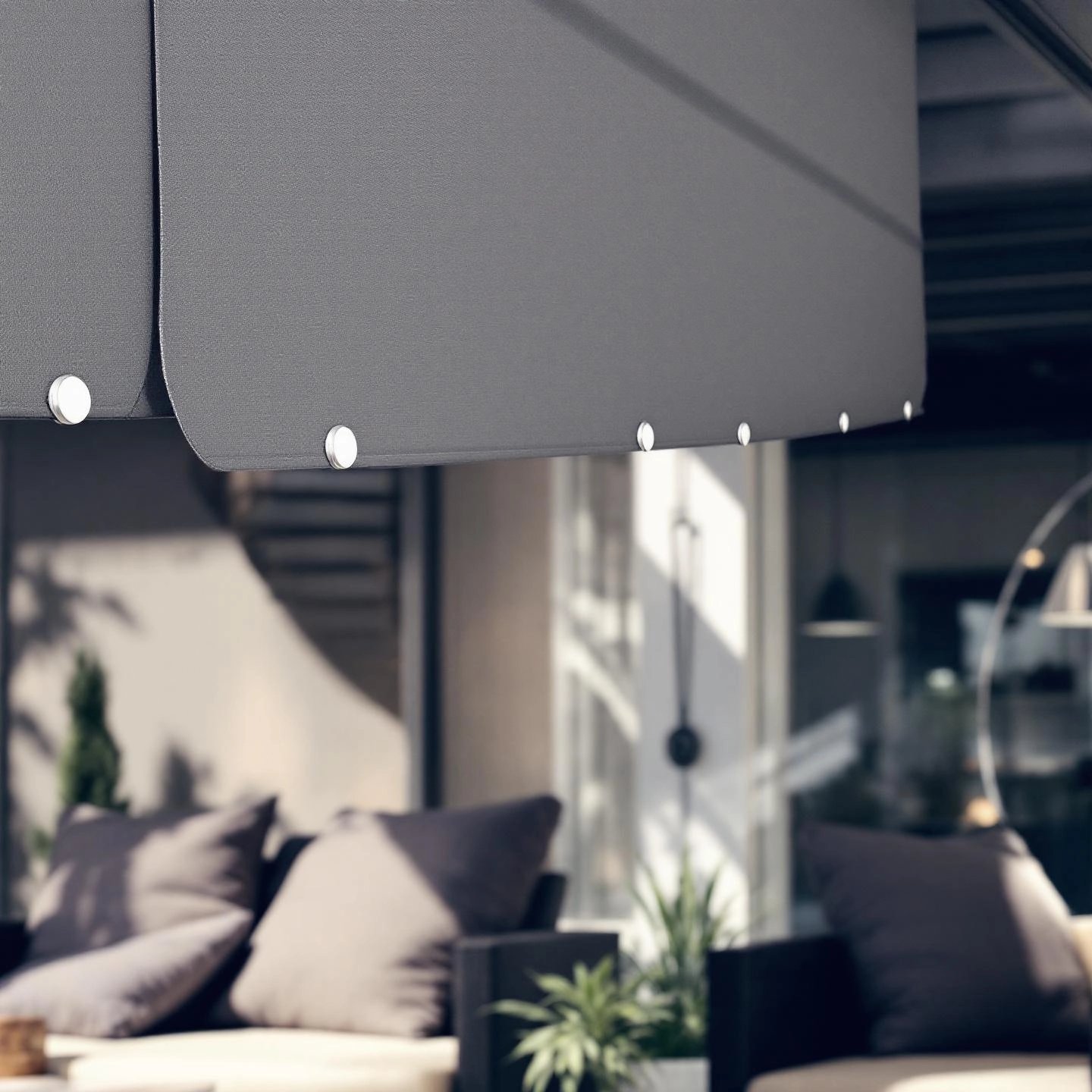
Imagine stepping outside to a comfortable, shaded retreat—rain or shine, your backyard is always ready for relaxation or entertaining guests. That’s the experience more homeowners are seeking with aluminum patio covers. As outdoor living spaces become an extension of the home, these covers are quickly gaining popularity for their blend of style, strength, and practicality. But what makes them stand out from other options?
When you think about upgrading your patio or backyard, you want something that lasts, looks great, and doesn’t require constant upkeep. Here’s where outdoor aluminum patio covers shine:
Choosing the right aluminum patio cover isn’t just about picking a style you like. You’ll want to consider your climate, home design, budget, and how you plan to use your outdoor area. This guide will walk you through:
By the end, you’ll have the knowledge and confidence to select, plan, and source the perfect aluminum patio cover for your home—transforming your backyard into a functional, beautiful, and low-maintenance oasis.

When you’re deciding on the best material for your patio cover, it’s easy to get overwhelmed by the options. Should you go with the classic appeal of wood, the modern simplicity of vinyl, or the long-lasting practicality of aluminum? Let’s break down the benefits of aluminum patio covers so you can make a confident, informed choice for your outdoor space.
Imagine you’ve just installed a beautiful wood patio cover. It looks amazing at first—but soon, the elements start to take their toll. Sun, rain, and pests can cause wood to warp, crack, or rot unless you’re committed to regular, labor-intensive maintenance. Now, picture an aluminum cover: it delivers the same architectural charm (even with a wood-grain finish), but with none of the headaches. Here’s how they compare:
Vinyl patio covers offer some advantages, such as being lightweight and easy to install. However, when it comes to durability, aluminum leads the way. Vinyl can crack, fade, or warp over time—especially in areas with intense sunlight or extreme weather. Aluminum’s resilience and longer lifespan make it a better investment for most climates and applications.
In short, when you weigh the aluminum vs wood patio cover debate—or even compare aluminum to vinyl—it’s clear that aluminum offers a rare combination of beauty, strength, and value. Next, let’s explore the styles available so you can find the perfect fit for your backyard oasis.

When you’re picturing your ideal backyard retreat, the style of your patio cover can make all the difference. But with so many options, how do you choose the right fit? Let’s break down the most popular types of modern aluminum patio covers—from sleek solid panels to rustic wood-look finishes—so you can match your vision and your lifestyle.
Imagine relaxing outdoors, rain or shine, without worrying about sunburn or soggy cushions. Solid (also called “pan” or “flat panel”) aluminum patio covers are designed for complete protection. These covers feature interlocking aluminum panels that create a watertight roof, shielding your patio from sun, rain, and even snow. Their clean, streamlined look suits both contemporary and traditional homes.
Prefer a lighter, airier feel? Lattice (sometimes called pergola) aluminum covers feature crisscrossed beams or slats that filter sunlight—reducing direct exposure by 40–60%—while allowing breezes to pass through. The result? A dappled shade effect that’s both elegant and functional, perfect for warm climates or garden settings.
Want to take comfort to the next level? Insulated aluminum patio covers include a high-density foam core sandwiched between two layers of aluminum. This design helps regulate temperatures—keeping your outdoor space cooler in the summer and warmer in the winter—while also reducing noise from rain or hail.
Not every patio is attached to the house. Free-standing aluminum patio covers can be placed anywhere in your yard—over a garden seating area, by the pool, or even as a stand-alone carport. These structures offer maximum flexibility in layout and design, making them ideal for larger or uniquely shaped outdoor spaces.
Think aluminum can’t look warm or inviting? Think again. One of the biggest trends in modern aluminum patio covers is the use of wood-grain finishes—sometimes called aluminum wood patio covers. These covers are crafted with advanced powder coating or transfer printing technology to mimic the look and texture of real wood, without any of the hassle. You get the timeless appeal of cedar, oak, or mahogany, plus all the durability of aluminum.
Still can’t find the perfect fit? Many manufacturers, including industry leaders like Shengxin Aluminum, offer fully customizable patio cover solutions. Whether you need a unique size, a special finish, or want to integrate features like lighting or ceiling fans, custom fabrication ensures your cover is tailored to your needs and style. Shengxin Aluminum, for example, provides advanced wood-grain aluminum and a wide array of colors and profiles, making it easy to achieve a bespoke look that stands out.
"With so many styles, finishes, and custom options available, there’s a modern aluminum patio cover for every backyard and every taste."
Now that you’ve explored the possibilities, you might be wondering which type offers the best comfort for your climate. Up next, we’ll compare insulated versus non-insulated aluminum patio covers so you can choose the right level of protection for your outdoor space.
When you’re deciding between an insulated aluminum patio cover and a non-insulated one, it’s easy to get stuck on the details. Do you want maximum comfort year-round, or is shade and affordability your top priority? Let’s break down the differences so you can make a confident choice for your outdoor space.
Both insulated and non-insulated patio covers use the same durable aluminum framework—posts, beams, and fascia—so you’ll enjoy long-lasting protection either way. The key distinction lies in the roof panels:
| Feature | Insulated Aluminum Patio Cover | Non-Insulated Aluminum Patio Cover |
|---|---|---|
| Temperature Control | Keeps patio 15–20°F cooler; ideal for hot climates and year-round use. | Blocks direct sun, but less effective at reducing heat buildup; best for mild climates or shaded areas. |
| Noise Reduction | Dampens rain and outdoor noise for a quieter space. | Creates a soft, soothing rain sound—many homeowners find it relaxing. |
| Usable Space | Comfortable in extreme weather; can be walked on for light maintenance or cleaning. | Longer clear spans possible (fewer posts needed); not designed for walking. |
| Appearance | Smooth, finished ceiling (often 8-inch plank style); conceals wiring and gutters for a premium look. | 3-inch grooved panels mimic traditional wood boards; clean, simple design. |
| Cost | Higher upfront investment due to insulation materials and added features. | More budget-friendly; ideal if cost is a primary concern. |
| Condensation & Drainage | Panels are sealed to prevent leaks; integrated gutter systems help manage runoff. | Also includes built-in gutters; both types minimize water splatter and puddling. |
| Customization | Supports ceiling fans, lighting, and accessories; wiring can be concealed. | Supports fans and lights; hollow channels can make wiring easier. |
| Maintenance | Minimal—just occasional cleaning, no risk of rot or termites. | Also low-maintenance; both types resist rust and pests. |
Still not sure? Ask yourself: Do you need maximum comfort on scorching summer days, or is reliable shade and cost savings enough? Either way, both options deliver the durability, low maintenance, and style you expect from aluminum patio covers. Next, let’s look at what’s involved if you’re considering a DIY installation—so you can weigh the pros and cons of tackling the project yourself.

Thinking about taking on an aluminum patio covers do it yourself project? Maybe you’ve seen a neighbor’s backyard transformation and wondered, “Could I do that myself?” Tackling a patio cover installation can be incredibly rewarding, but it’s important to understand what’s involved before you dive in. Let’s break down what you need to know, from skills and tools to timelines and the all-important permit process.
Not every patio is created equal, and not every homeowner has the same experience. Here’s how to tell if a DIY approach is a good fit for you:
| Best for DIY | Consider a Pro |
|---|---|
|
|
Sounds complex? Don’t worry—many aluminum patio cover kits come with detailed instructions, but you’ll need a few basics:
Some kits even include live support or helplines if you get stuck along the way.
How long does it take? Imagine installing your cover over two or three weekends—here’s a realistic breakdown:
In total, expect about 4–6 weeks from start to finish, depending on your experience and local permitting process.
Permits might sound intimidating, but they’re crucial for safety and resale value. You’ll likely need a permit if:
The process usually involves submitting drawings, waiting 2–3 weeks for approval, and scheduling inspections as needed. Always check with your local building department for specific requirements in your area.
| DIY Aluminum Patio Cover Kits | Professional Installation |
|---|---|
Cons
|
Cons
|
Ultimately, if you enjoy a challenge and have the time and tools, a DIY aluminum patio cover project can be both cost-effective and rewarding. But if your space is complex, your schedule is tight, or you want peace of mind, hiring a professional might be the best route. Next, let’s break down the costs and see what factors influence the price of your new patio cover.
Ever wondered why aluminum patio covers cost can vary so widely from one project to the next? Maybe you’ve seen prices that range from a few thousand dollars to well over $20,000 and thought, “What’s driving these numbers?” Let’s pull back the curtain and walk through the main factors that influence aluminum patio cover prices—so you can set a realistic budget and avoid surprises along the way.
Imagine you’re shopping for a new patio cover. The sticker price isn’t just about the aluminum itself—it reflects a combination of design choices, installation requirements, and optional extras. Here’s what you’ll want to consider:
| Type of Aluminum Patio Cover | Average Installed Cost (per sq. ft.) | Best For |
|---|---|---|
| Lattice / Pergola | $18 – $22 | Partial shade, decorative appeal |
| Solid (Non-Insulated) | $20 – $50 | Full shade, rain protection |
| Insulated | $30 – $60 | Year-round comfort, energy efficiency |
“When budgeting for your new patio cover, always factor in the total project scope—not just the base material price. Small upgrades can make a big difference in comfort and longevity.”
Now that you have a clear picture of what shapes aluminum patio covers cost, you’re better prepared to request accurate quotes and plan your project. Next, we’ll guide you through the process of finding a reputable local installer to bring your vision to life.
Ready to transform your outdoor space but not sure where to start with installation? Finding the right professional for your aluminum patio covers near me search can feel overwhelming. Should you trust online reviews, ask your neighbors, or just go with the first quote you get? Here’s a step-by-step guide to help you confidently choose a skilled installer who delivers quality, value, and peace of mind.
"A little extra time spent vetting your patio cover installer can save you from costly headaches down the road. Quality, communication, and credentials matter."
Once you’ve found the right pro, you’ll be ready to bring your backyard vision to life. Up next, let’s explore where to source your patio cover—comparing big box retailers to specialty manufacturers—so you get the best combination of quality and value for your investment.
When you’re ready to buy, the question quickly comes up: Should you pick up your new patio cover at a big box retailer like Home Depot, or is it worth seeking out a specialty manufacturer? Let’s break down what you can expect from each option—so you can match your budget, style, and long-term goals.
Imagine walking through the aisles at your local Home Depot, seeing a variety of patio cover kits stacked and ready to go. Now picture browsing a specialty manufacturer’s website, where you can customize every detail of your cover, from color to rafter design. Both paths have their advantages, but the best choice depends on your priorities.
| Feature | Big Box Stores (e.g., Home Depot, Lowe’s, Costco) | Specialty Retailers & Manufacturers (e.g., Shengxin Aluminum) |
|---|---|---|
| Product Selection |
|
|
| Material Quality |
|
|
| Price |
|
|
| Expertise & Support |
|
|
| Warranty & Longevity |
|
|
For instance, aluminum patio covers Home Depot offers are great for straightforward, DIY-friendly installations. You’ll find affordable kits in standard sizes, with clear instructions and delivery options—perfect if you want to get started this weekend and don’t need custom features. Lowe’s and Costco have similar selections, focusing on budget and convenience.
But what if your patio is an unusual size, or you have a specific vision—like a wood-grain finish or integrated lighting? This is where specialty aluminum patio cover manufacturers shine. Companies like Shengxin Aluminum offer advanced customization, from premium powder coating and wood-grain transfer to insulated panels and custom rafter designs. Their expertise also means you get guidance for challenging site conditions, engineering support for larger spans, and access to professional installers.
“If you want a patio cover that’s truly tailored to your home—and built to last—working directly with a specialty manufacturer like Shengxin Aluminum is the way to go.”
In short, if you’re seeking a fast, budget-friendly solution, big box stores offer plenty of ready-to-install options. But for those prioritizing custom design, durability, and professional expertise, specialty manufacturers deliver unmatched quality and flexibility. Next, let’s take a closer look at what sets premium systems—like 4K aluminum patio covers—apart from standard offerings.

Ever wondered why some patio covers instantly elevate a backyard into a true outdoor oasis? If you’ve been researching premium aluminum patio covers, you’ve likely come across the term 4K aluminum patio cover. But what exactly sets these high-end systems apart from standard options—and are they worth the investment? Let’s break down what makes 4K aluminum the top choice for homeowners seeking unmatched durability, design, and performance.
Imagine a patio cover that not only withstands the harshest weather but also brings a sleek, architectural look to your home. That’s the promise of 4K aluminum systems. Unlike traditional roll-formed or embossed aluminum covers, 4K uses extruded 6061-T6 aircraft-grade aluminum—a material prized for its strength, rigidity, and ability to span longer distances without sagging or warping. This means you get a structure that’s engineered to handle winds up to 130 mph and meet strict seismic standards, making it ideal for both coastal and inland climates.
So, what do you actually get with a 4K aluminum patio cover that you won’t find in most standard systems? Here’s a closer look at the standout features:
It’s true—these premium systems come with a higher upfront price tag compared to standard aluminum or wood-look alternatives. But as you weigh your options, consider what you’re really getting for your investment:
As one real-life example, a homeowner in Palm Springs opted for a 4K insulated, cantilevered patio cover complete with a misting system and integrated fan—creating a luxurious, shaded retreat that stands up to intense heat and wind.
“If you want a patio cover that’s as much a design statement as it is a functional upgrade, 4K aluminum delivers on every front.”
In summary, 4K aluminum patio covers are the gold standard for those seeking the ultimate blend of strength, style, and low-maintenance living. Next, let’s wrap up with a checklist to help you take the next steps—whether you’re ready to measure your space, request quotes, or explore custom options for your dream outdoor retreat.
When you reach the end of your search for the best aluminum patio covers, it’s easy to wonder: Where do I go from here? With so many styles, features, and installation options, making the right choice can feel overwhelming. But remember, creating your ideal outdoor space is a journey—one where each step brings you closer to a backyard that’s both beautiful and functional.
Imagine your backyard transformed—shaded, comfortable, and ready for every season. Here’s a simple checklist to help you move forward:
| Step | Action |
|---|---|
| 1. Measure Your Space | Accurately measure your patio or outdoor area to determine ideal cover size and layout. |
| 2. Define Your Priorities | Decide on key features: full shade, partial sun, insulation, custom finishes, or accessories. |
| 3. Research Installers | Look for licensed, experienced professionals in your area or ask manufacturers for recommendations. |
| 4. Request Quotes | Compare detailed estimates from multiple sources, making sure to match specs and warranty details. |
| 5. Explore Custom Options | For unique designs or premium finishes, connect with established manufacturers like Shengxin Aluminum for tailored solutions. |
“The right patio cover isn’t just about shade—it’s about creating a space you’ll love for years to come. Quality materials, thoughtful design, and expert installation make all the difference.”
Whether you’re dreaming of a modern pergola, a cozy insulated retreat, or a custom structure that matches your home’s style, your perfect solution is within reach. Start by measuring your space, clarifying your vision, and reaching out to trusted professionals or manufacturers. For those who demand the highest standards in both performance and aesthetics, Shengxin Aluminum stands ready to help you bring your outdoor dreams to life with custom aluminum patio covers built to last.
Aluminum patio covers are durable and low maintenance, but they can be prone to denting if struck by heavy objects. Thinner panels are more susceptible, but choosing a higher gauge aluminum can help minimize this risk. While they resist rust and insects, some homeowners may prefer the natural look of wood, although modern aluminum covers now offer realistic wood-grain finishes.
A 20x20 aluminum patio cover typically ranges from $8,000 to $20,000 installed, depending on whether you choose a lattice, solid, or insulated design, as well as the thickness, finish, and custom features. Additional factors such as site conditions, installation method, and optional accessories like lighting or gutters can also impact the final price.
Yes, aluminum is an excellent choice for patio covers due to its durability, resistance to rust and corrosion, and minimal maintenance needs. It withstands harsh weather, won't rot or warp, and is available in a wide range of styles and finishes, making it both practical and visually appealing for outdoor spaces.
Aluminum patio covers generally offer greater durability, design versatility, and resistance to weather compared to vinyl. While vinyl is lightweight and easy to install, it can crack or fade over time. Aluminum maintains its appearance longer, supports more customization, and is ideal for climates with intense sun or varying weather conditions.
DIY installation is possible with many aluminum patio cover kits, especially for simple patio shapes and if you have basic construction skills. However, for complex designs, larger spans, or if local permitting is required, hiring a professional ensures code compliance, expert craftsmanship, and access to extended warranties. Always assess your skills and project complexity before deciding.
 serviço on-line
serviço on-line 0086 136 3563 2360
0086 136 3563 2360 sales@sxalu.com
sales@sxalu.com +86 136 3563 2360
+86 136 3563 2360